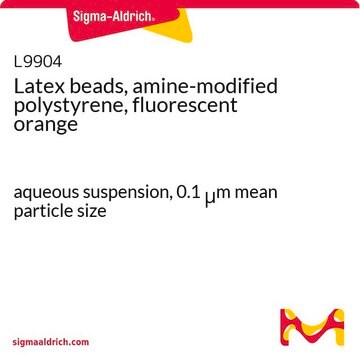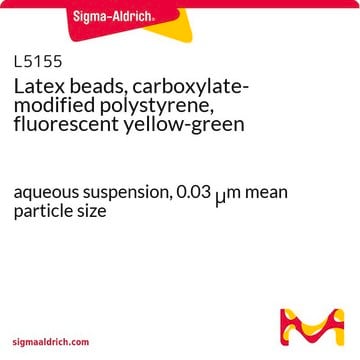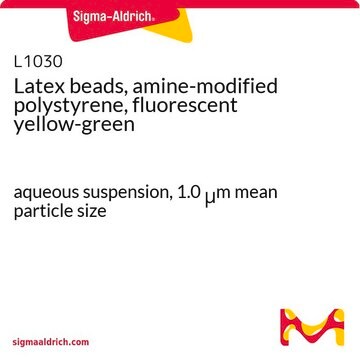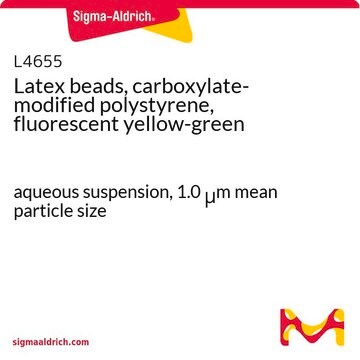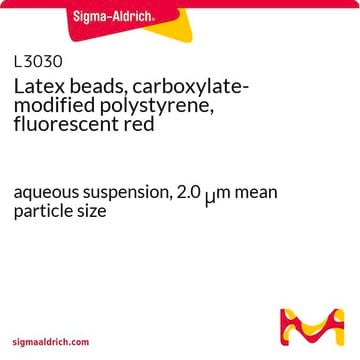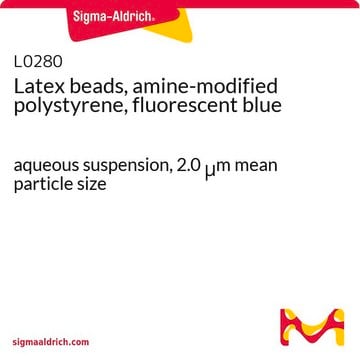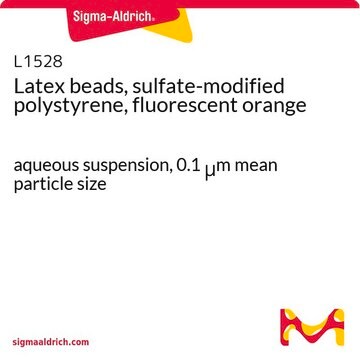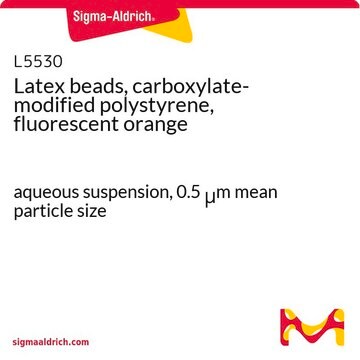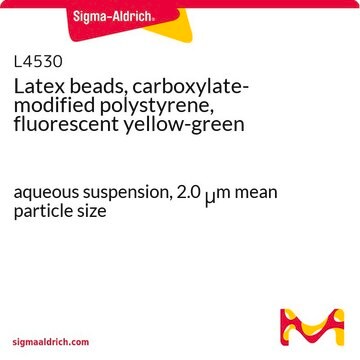These beads are prepared as a 2.5% or 2.5 g/100 mL suspension. which is 25mg/ml.
L0780
Latex beads, amine-modified polystyrene, fluorescent blue
aqueous suspension, 0.05 μm mean particle size
Sélectionner une taille de conditionnement
131,00 €
Sélectionner une taille de conditionnement
About This Item
131,00 €
Produits recommandés
Forme
aqueous suspension
Composition
Solids, 2.5%
Technique(s)
cell based assay: suitable
Taille moyenne des particules
0.05 μm
Fluorescence
λex ~360 nm; λem ~420 nm
Application(s)
cell analysis
Vous recherchez des produits similaires ? Visite Guide de comparaison des produits
Application
Actions biochimiques/physiologiques
Code de la classe de stockage
10 - Combustible liquids
Classe de danger pour l'eau (WGK)
WGK 3
Point d'éclair (°F)
Not applicable
Point d'éclair (°C)
Not applicable
Faites votre choix parmi les versions les plus récentes :
Déjà en possession de ce produit ?
Retrouvez la documentation relative aux produits que vous avez récemment achetés dans la Bibliothèque de documents.
Les clients ont également consulté
-
Can you specify how much milligram of paricle in 1ml solution
1 answer-
Helpful?
-
-
What will be the concentration of plastics in 1ml? Can I add distilled water to make stock solution?
1 answer-
The amine-modified polystyrene latex beads are suspended in distilled water with a minimum amount of proprietary cationic surfactant (0.2%). The concentration of solids (plastics) is >/= 2.5%.
Helpful?
-
Active Filters
Notre équipe de scientifiques dispose d'une expérience dans tous les secteurs de la recherche, notamment en sciences de la vie, science des matériaux, synthèse chimique, chromatographie, analyse et dans de nombreux autres domaines..
Contacter notre Service technique
